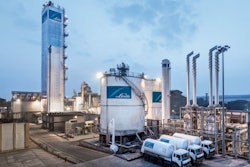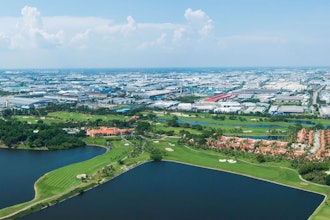WASHINGTON (AP) -- The Nuclear Regulatory Commission ordered major safety changes for U.S. nuclear power plants Friday, two days before the one-year anniversary of the nuclear crisis in Japan.
The orders require U.S. nuclear plants to install or improve venting systems to limit core damage in a serious accident and to install sophisticated equipment to monitor water levels in pools of spent nuclear fuel.
The plants also must improve protection of safety equipment installed after the Sept. 11, 2001, terror attacks and make sure it can handle damage to multiple reactors at the same time.
The orders were the first issued by the NRC since the March 11 earthquake and tsunami that crippled Japan's Fukushima Dai-ichi nuclear plant. The tsunami sent three of the plant's reactors into meltdown in the world's worst nuclear crisis since Chernobyl in 1986.
NRC Chairman Gregory Jaczko called the new orders "a significant step forward on our post-Fukushima efforts" and said they reflected great effort by NRC staff to produce a comprehensive package within a year of the Japan disaster.
"Of course, there's still a great deal of work ahead of us," Jaczko said in a prepared statement.
NRC Chairman Gregory Jaczko called the new orders "a significant step forward on our post-Fukushima efforts" and said they reflected great effort by NRC staff to produce a comprehensive package within a year of the Japan disaster.
"Of course, there's still a great deal of work ahead of us," Jaczko said.
Jaczko told The Associated Press late Friday he was disappointed that the five-member commission was unable to agree on requirements that would force the nuclear industry to make changes within five years of the disaster. U.S. plants must comply with the orders issued Friday by the end of 2016.
"Five years is a very, very long time for us to be waiting to see" how plants will deal with earthquake risks and flooding risks, Jaczko said.
An NRC task force formed in response to the Japan crisis recommended a series of changes last year designed to increase protection at the 104 nuclear reactors in the U.S. The changes include requirements for nuclear plants to assess earthquake risks better and to cope with incidents they were not initially designed to handle, such as prolonged power blackouts or damage to multiple reactors at the same time. Both scenarios occurred during the Japan crisis.
Jaczko has said he wants all Fukushima-related rules to be in place within five years of the disaster.
The nuclear industry has said it may spend as much as $100 million to buy and install portable emergency equipment, including pumps and generators, at power plants, in the wake of Fukushima.
Companies that operate the nation's 65 commercial nuclear plants already have acquired or ordered more than 300 pieces of major equipment to supplement existing safety equipment, according to the Nuclear Energy Institute, an industry group. The plants have a total of 104 reactors.
"We know we need to learn every possible lesson from Japan and apply those lessons immediately and in the long term at American nuclear energy facilities," said Tony Pietrangelo, NEI's senior vice president and chief nuclear officer.
If nuclear power plants lose power from the grid and other sources, the new equipment will provide power and water to maintain key safety functions -- reactor core cooling, used-fuel pool cooling and containment integrity, Pietrangelo said.






















